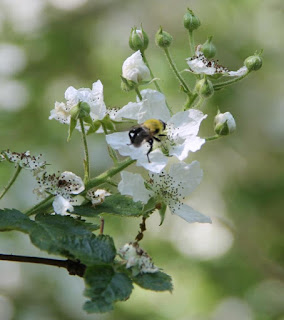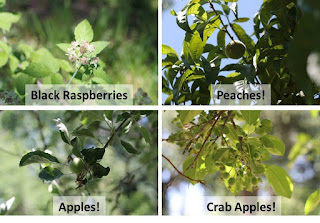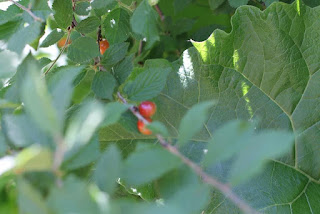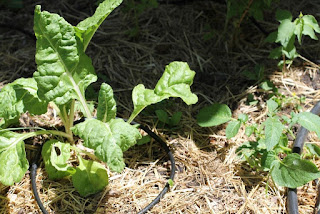They say that once you have honeybees, you look at flowers differently. You wonder if a flower is a good source of nectar, of pollen, or both. You wonder if the pollen is good nutrition for the bees, or junk food like
pine pollen. You might wonder if a flower has been sprayed with a pesticide of some sort. At the very least, you become more aware of what's blooming at any given time of year and wonder if your bees are hitting it up to make you some honey.
If you also happen to be a
huge bug nerd amateur entomologist, you might notice that some times of the year there is only one kind of flower blooming in a given area. And as a result, that patch of flowers becomes a veritable smorgasbord of pollinators. We
noticed it last summer on our hawthorn tree. A few weeks ago, we also noticed it on a blackberry patch while visiting family in Wisconsin. (For what it's worth, blackberries make
junk food-like pollen, but may be a
good source of nectar.)
Shrugging off the puzzled and slightly concerned glances of our relatives, we grabbed the camera and started snapping photos...let's see what we found!
 |
| There were plenty of hover flies hanging out (including this Syrphus ribesii), but they weren't very cooperative as far as landing on flowers with good lighting. |
 |
| A fancy blue metallic bee was slightly more accommodating. We're pretty sure it's a blue mason bee (Osmia lignaria), but the midsection looks kind of thin and the abdomen looks not very hairy compared to other photos online. |
 |
| This paper wasp was our best customer, as it was willing to be in focus and was visiting only the most attractive flowers. We think it's a Polistes rubiginosus, or Polistes carolina but it's hard to be sure. They're very similar, and neither one is normally found as far north as Wisconsin. |
 |
| An aptly-named bumble bee was also buzzing drunkenly from flower to flower. Looks like it's probably a Brown-belted Bumble Bee, Bombus griseocollis., but possibly a Common Eastern Bumble Bee, Bombus impatiens. |
 |
| Even a butterfly (we think it's a Small Pearl-Bordered Fritillary, Boloria selene) was getting in on the action! |
There were probably half a dozen other species that wouldn't hold still long enough to get their picture taken, but we'll have to check out this blackberry patch again next year! Not sure if we'll be back in time this year to enjoy the fruits of these pollinators' labor, but hopefully our relatives will remember this post and have a greater appreciation for these fine fellows while they're munching on delicious blackberries later this summer.
Where are the pollinator parties in your neck of the woods?

















